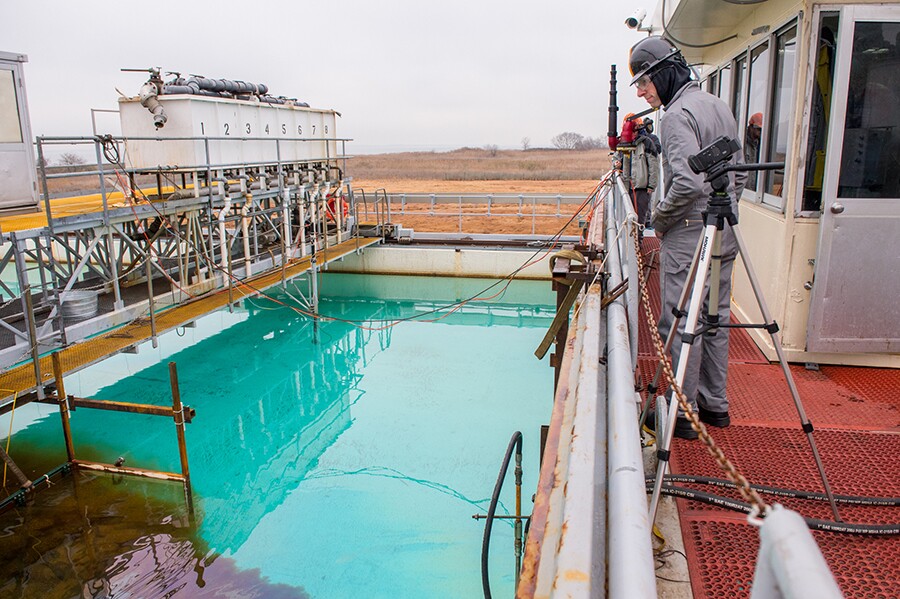When oil is spilled into the ocean, clean up efforts can focus on the surface, where much of it gathers. There, the slick can be burned away or collected with various sponges, soaps or meshes, but plumes of subsurface oil are harder to recover. Developed by the Argonne National Laboratory, Oleo Sponge is a new type of foam that can not only soak up oil that has dispersed throughout a water column, but can be wrung out to allow reuse of both the material and the recovered oil.
In the wake of the Deepwater Horizon disaster in 2010, which saw almost 5 million barrels of oil flow into the Gulf of Mexico, scientists and companies around the world stepped up development of new clean up techniques. Surface skimmer systems, centrifuges, filters and nature-inspired materials have all been put to the task, but it's hard to find a solution that's reusable, durable and effective on both surface and subsurface oil.
"The Oleo Sponge offers a set of possibilities that, as far as we know, are unprecedented," says Seth Darling, co-inventor of the material.
The base material of the new sponge is the common and versatile polyurethane foam, which is great at grabbing liquids. The problem is, in its normal state the foam doesn't discriminate between oil and water, so to help it single out the mess, the Argonne researchers modified the material using a process called sequential infiltration synthesis (SIS).

This involved the team first creating a thin "primer" layer of metal oxide inside the foam. Oleophilic (oil-loving) molecules were then stuck onto that layer, which allows the sponge to prefer oil over water. In seawater tank tests, the Oleo Sponge managed to adsorb diesel and crude oil from the water, both on and below the surface. Better yet, it can be wrung out afterwards, allowing the material to be reused, and the oil to be recovered.
"The material is extremely sturdy," says Darling. "We've run dozens to hundreds of tests, wringing it out each time, and we have yet to see it break down at all."
Along with oil spills, the team says the Oleo Sponge could be used to remove diesel and oil that builds up in ports and harbors from regular use. Attaching other molecules to the primer in the sponge could also allow it to single out other materials that need to be removed from water.

"The technique offers enormous flexibility, and can be adapted to other types of cleanup besides oil in seawater," says Jeff Elam, co-author of the study. "You could attach a different molecule to grab any specific substance you need."
While the Oleo Sponge is being further developed, the team is also looking into how the system can be commercialized. The material can be seen in action in the video below.
The research was published in the Journal of Materials Chemistry A.
Source: Argonne National Laboratory









